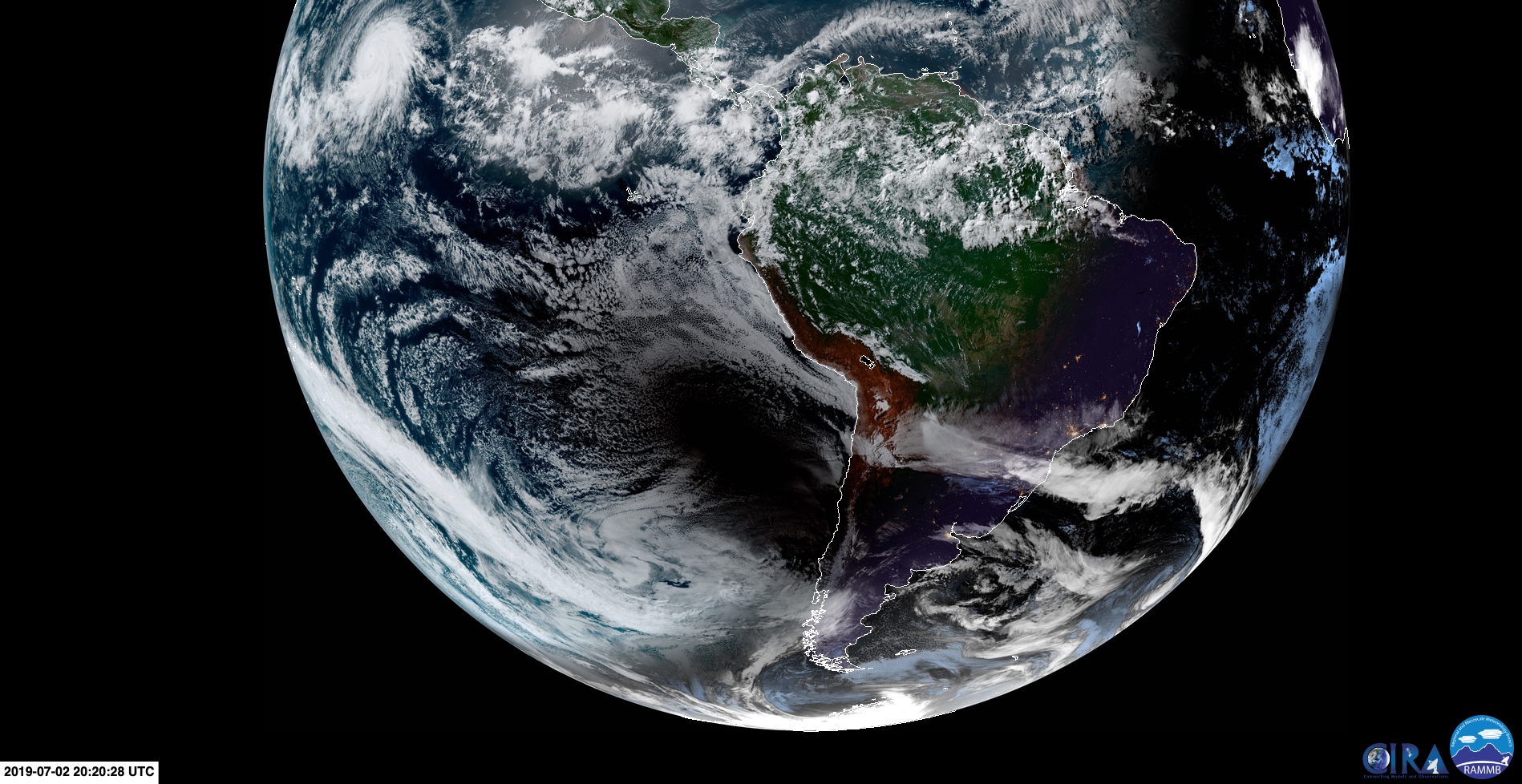Total solar eclipse stuns crowds in South America

Satellite images captured the moon's shadow passing over the south Pacific Ocean during a total solar eclipse on Tuesday.
While this week's total solar eclipse was only visible from a few places on Earth, everyone was able to witness its effects on the surface of our planet from above.

Image: Satellite image of the moon's shadow during the a solar eclipse on Tuesday, July 3rd. Credit: CIRA/RAMMB
The United States' Geostationary Operational Environmental Satellite captured images of the moon's shadow passing over the southern Pacific Ocean and parts of South America on Tuesday (Wednesday morning in Australia).
A total solar eclipse stunned crowds in parts of South America on Tuesday. Satellite images also captured images of the moon's shadow passing over the south Pacific Ocean during the eclipse: https://t.co/iqxqY0K7KF Credit: CIRA/RAMMB pic.twitter.com/uXnytSxYN3
— Weatherzone (@weatherzone) July 3, 2019
A total solar eclipse occurs when the moon passes between the Sun and Earth, causing the moon to cast a shadow on a small area of our planet. Anyone located completely inside the moon's shadow during the eclipse experiences a brief period of darkened skies during the day. This was the case in parts of Chile on Tuesday.
The next total solar eclipse will occur in December 2020.